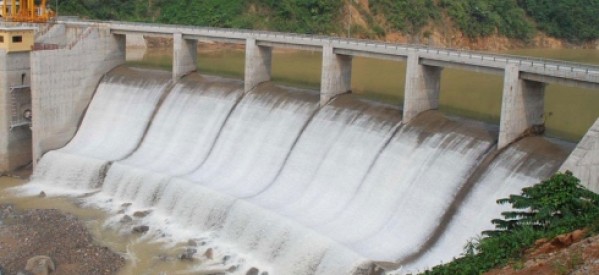Pakistan’s First Hydropower IPP Begins Operation

Pakistan’s first hydroelectric Independent Power Project (IPP) – the 84-megawatt New Bong Escape hydropower project – has commenced commercial operations after obtaining certification by an independent engineer appointed by the power purchaser (CPPA/NTDC).
The hydropower project, which is located about 7.5 kilometres downstream of Mangla Dam in Azad Kashmir, will utilise River Jhelum water which is being wasted for almost five decades. The project has been developed under Build-Own-Operate-Transfer (BOOT) basis, whereby it would be transferred to the government of Azad Kashmir free of cost at the end of a 25-year term.
“The project, which started on December 28, 2009, commenced commercial operations on March 23, 2013 and is a pride for Pakistan,” said Khalid Faizi, Director, Laraib Energy Limited, the project owner. The project has been established with an investment of $233 million at 75:25 debt-equity ratio. New Bong Escape Hydropower complex has been built by EPC contractors of Sambu Construction Company of South Korea.
The energy generated by the project is being purchased by a single buyer, Pakistan’s National Transmission and Dispatch Company Limited (NTDC), under a long term Power Purchase Agreement (PPA). Under the PPA the hydrological risk is borne by the Power Purchaser through guaranteed payment for fixed costs like debt servicing, O&M, ROE and insurance. A cost-plus-tariff mechanism is in place under the PPA and the Project has been allowed a tariff of Rs 6.8362/KWh (cents 8.5256/KWh).
In May 1995, the government announced a hydel policy to encourage proposals for power generation based on indigenous hydel resources. The plan for 18-MW proposed for installation on the New Bong Escape was shelved and an LoI for 45MW was obtained under the Hydel Policy to develop the existing potential at the New Bong site. However, things did not change much and the public sector domination of hydropower meant very little encouragement to the private sector.
Applications were received for development of some 2,000MW of hydropower projects under the 1995 Policy but all the projects failed and fizzled out as WAPDA offered tariff of 3.3 US cents per kWh, but refused to buy power at the policy tariff of 4.7 cents supported by a decision of Cabinet Committee on Investment (CCoI) which bypassed the policy and directed hydropower companies to negotiate tariff with WAPDA, the sole power purchaser.
However, the New Bong Escape sponsors did not give up and continued their struggle. This short sighted approach of Government, by not being able to foresee that oil had a finite life and diminishing supply would ultimately drive up prices. Government’s policies damaged private hydropower due to inordinate delay in implementation of agreements by at least two decades, said an official of PPIB on condition of anonymity.
“Had the policy been implemented some 2000MW of projects would be generating electricity at under 3.3 cents per kWh today, with a remaining useful life of at least 50 years and the current power crisis would have been mitigated to a large extent,” said one of the experts. Finally, when the price of oil exploded, the realisation set in that hydropower development was very important as a hedge against high imported oil price and as an essential element for energy security of the country.
The sources said, ADB decided to strongly support the project as a trailblazer in Pakistan’s efforts to develop private hydropower which was vital in laying the seed for limited-recourse project finance whereby lenders rely on the to-be-constructed project revenue stream as their prime security thus requiring a very tight and structured arrangement to manage and mitigate lenders risks.






